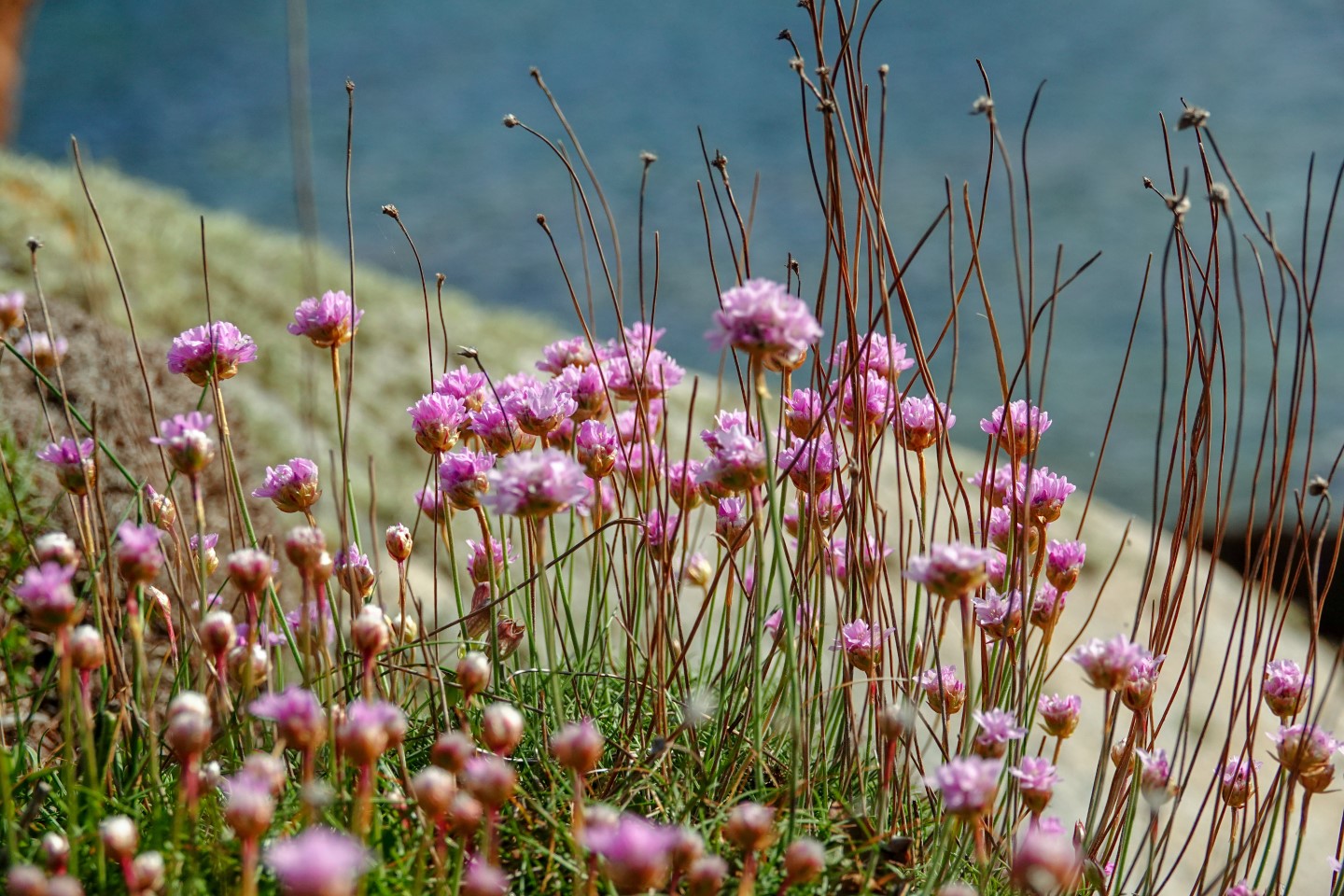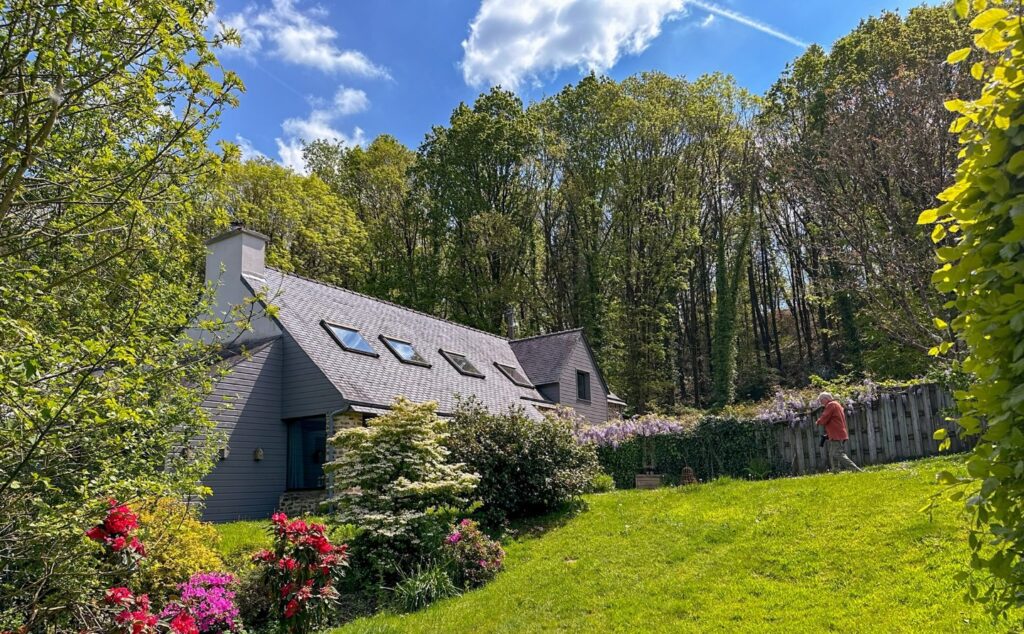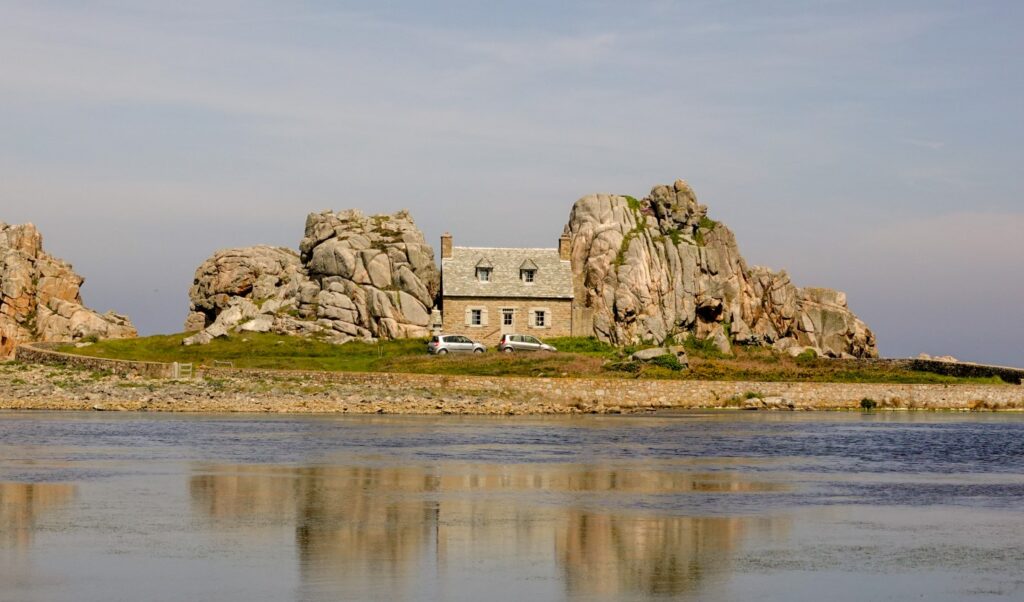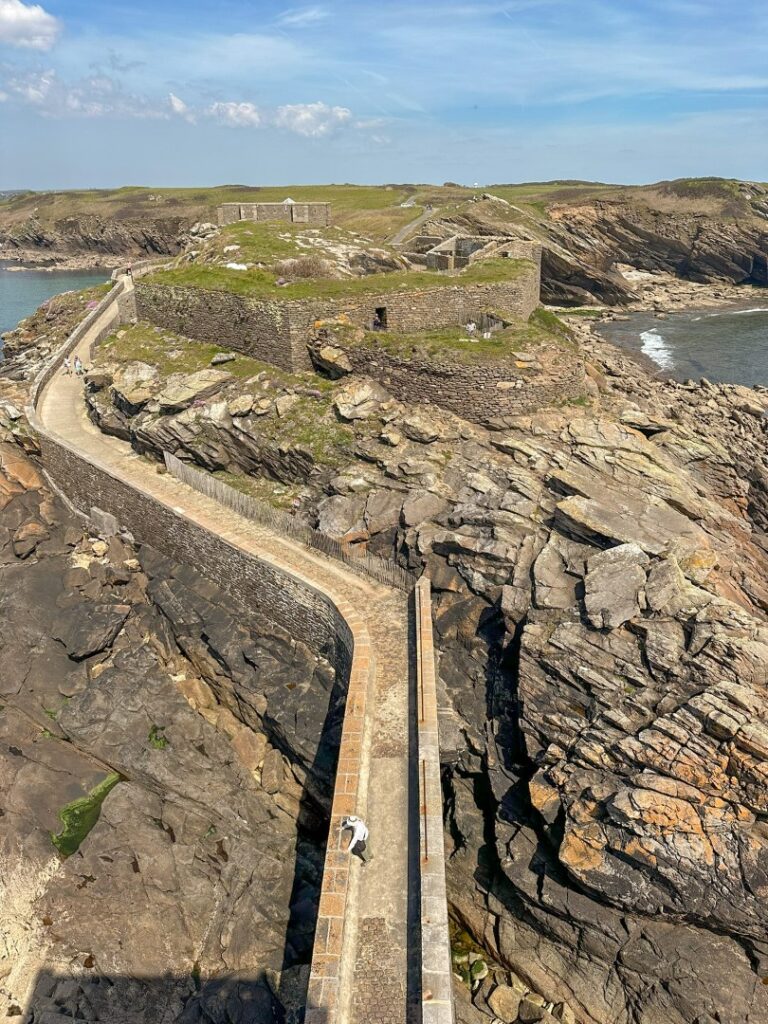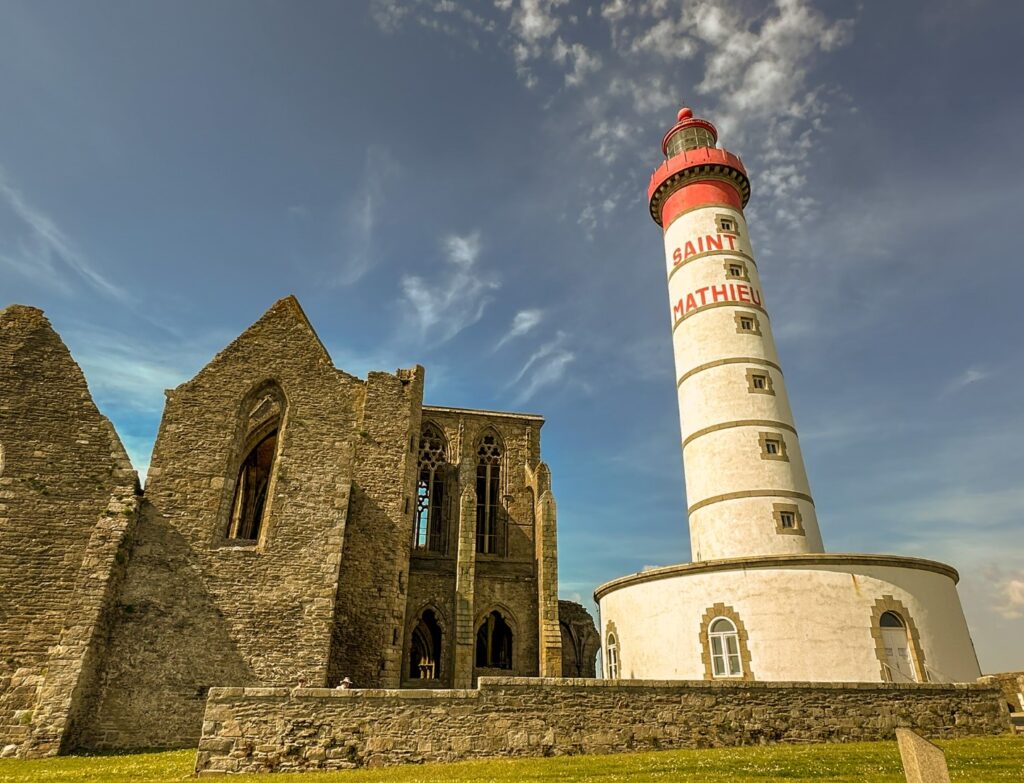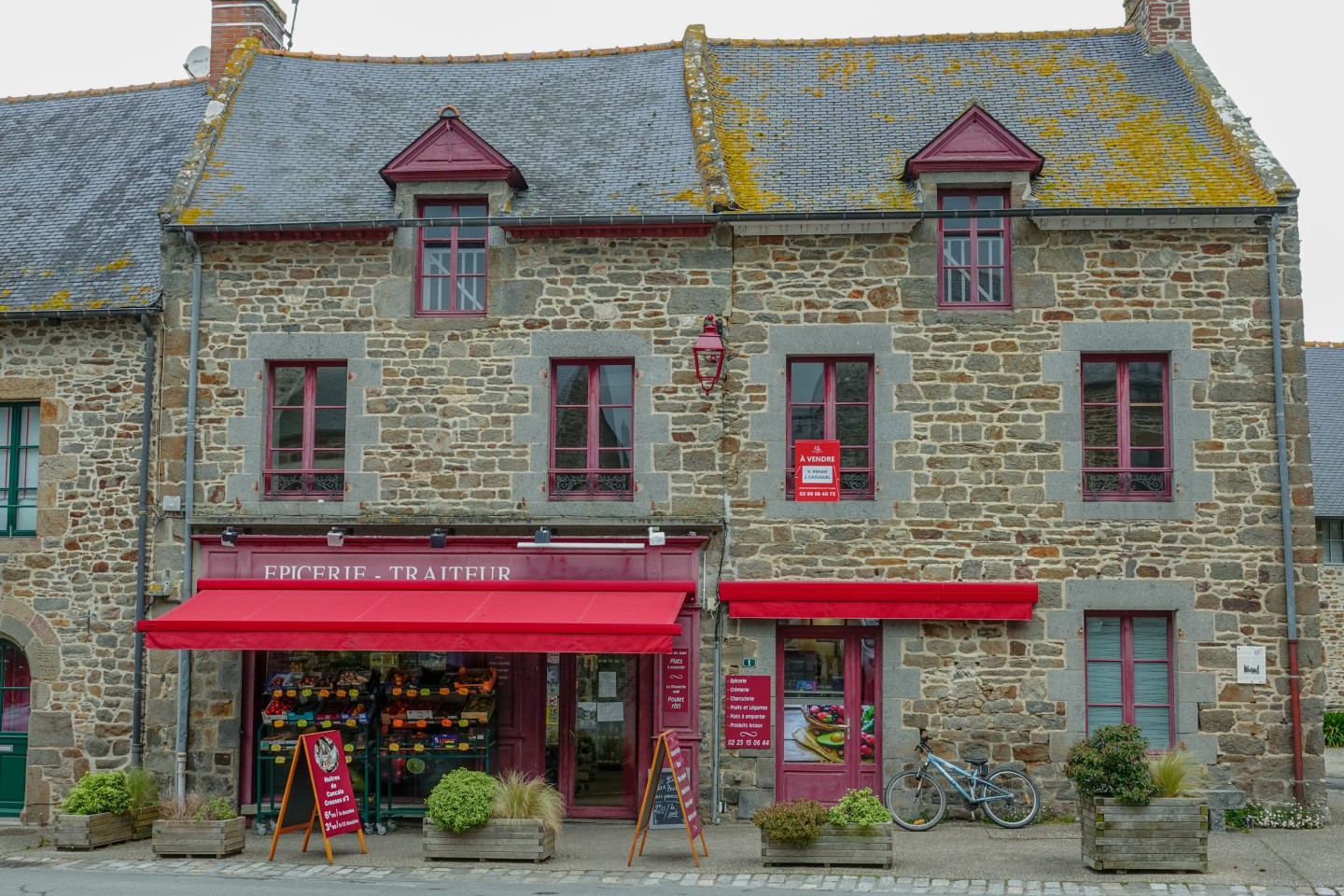Leaving St. Malo the sky looked threatening and the last half of our drive west into the department of Finistère was in heavy rain on a two lane 120 km/h motorway, popular with heavy vehicles and requiring concentration plus.
I was very happy when we got off the motorway and our GPS directed us down a quiet road and through a beautiful forest and eventually we saw the entrance to the very picturesque Gîtes du Bulz – “three charming gîtes in Brittany, between sea and forest..”
We were met by the owner Perrine and shown to La Rivière, our cottage for the next twelve days.
This cottage would prove to be one of my best choices so far, a serene little hideaway with only abundant bird chatter to break the silence. That is apart from ‘saxophone man’ who was practicing his scales for the first couple of days of our stay despite assuring the owners he wouldn’t… 😂
The property is located a short drive from the town of Morlaix which is located in an estuary protected by the Arrée foothills and mountains.
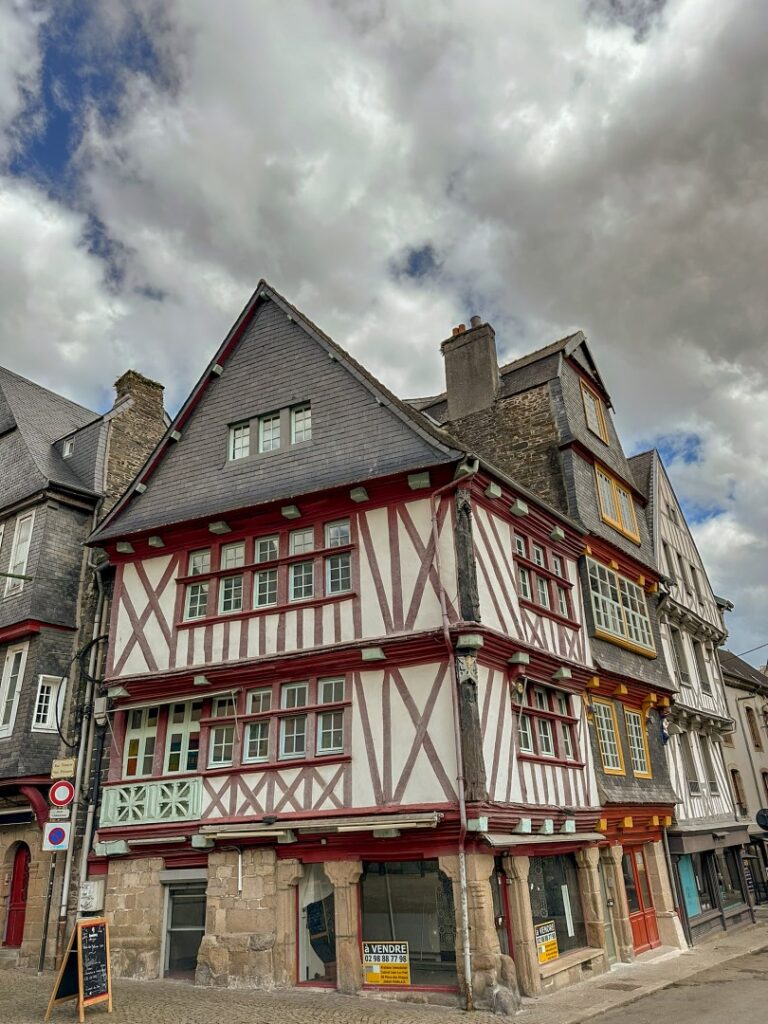
This beautiful Finistère town is an architectural delight with magnificent half timbered 16th-century houses, deliberately built with a smaller ground floor surface area that grew with each added floor thereby creating architectural overhangs that kept lower timbers and merchandise dry whilst avoiding excessive taxes (then based on the ground floor area of a house).
The town’s emblem, the Morlaix viaduct, is a superb railway structure with a height of 58 metres which towers majestically over the old town and the harbour, visible from everywhere. We spent our first Sunday energetically walking the streets, snapping photos at every corner (me) and climbing to the first level of the Viaduct.
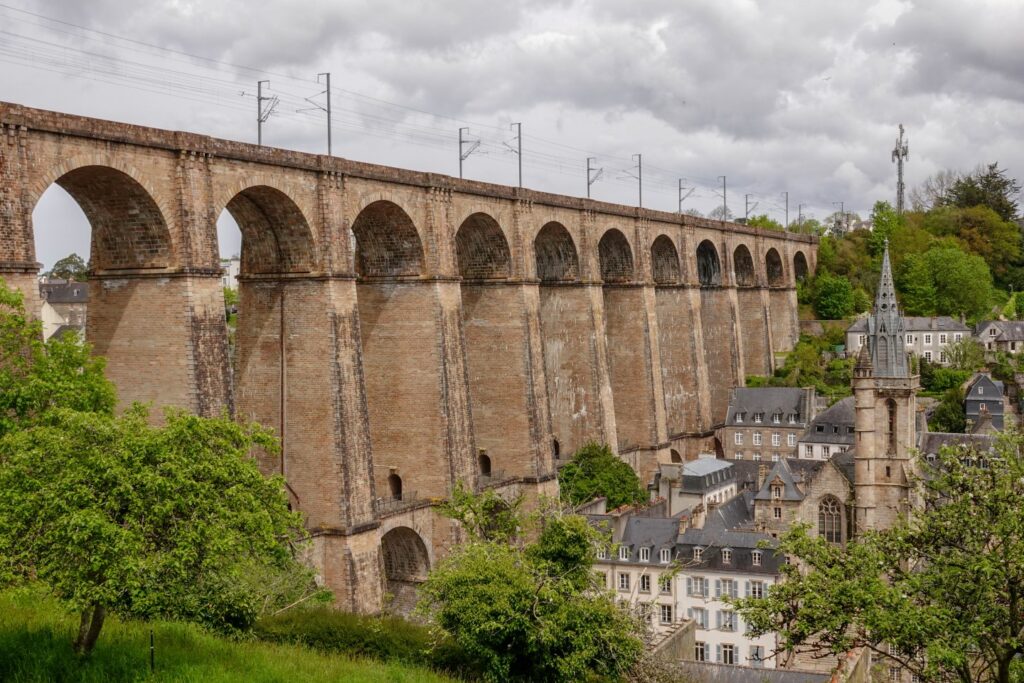

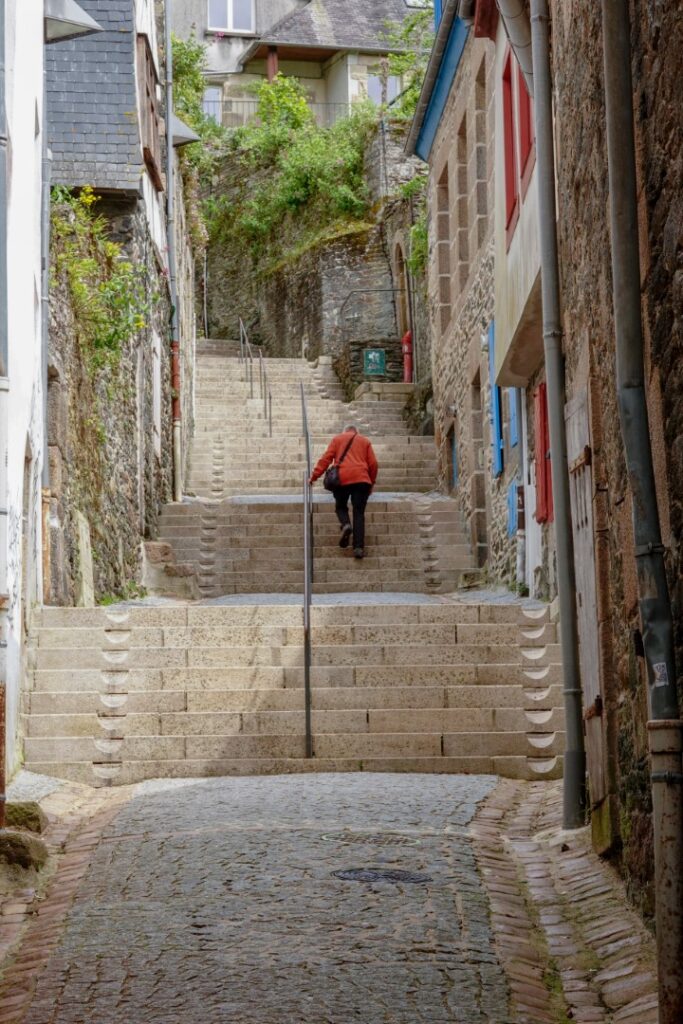
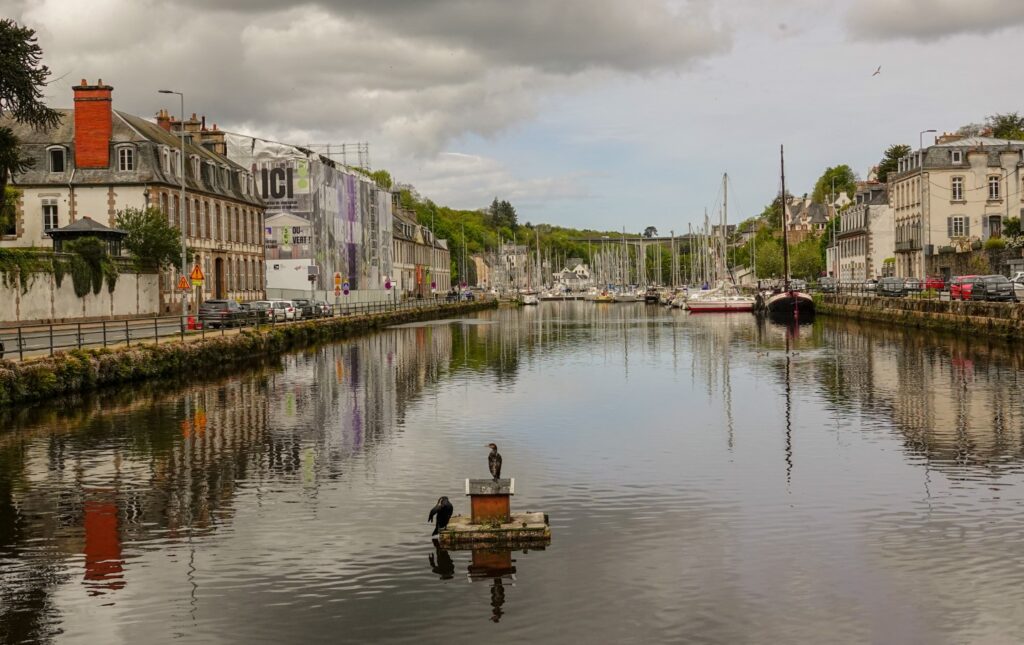
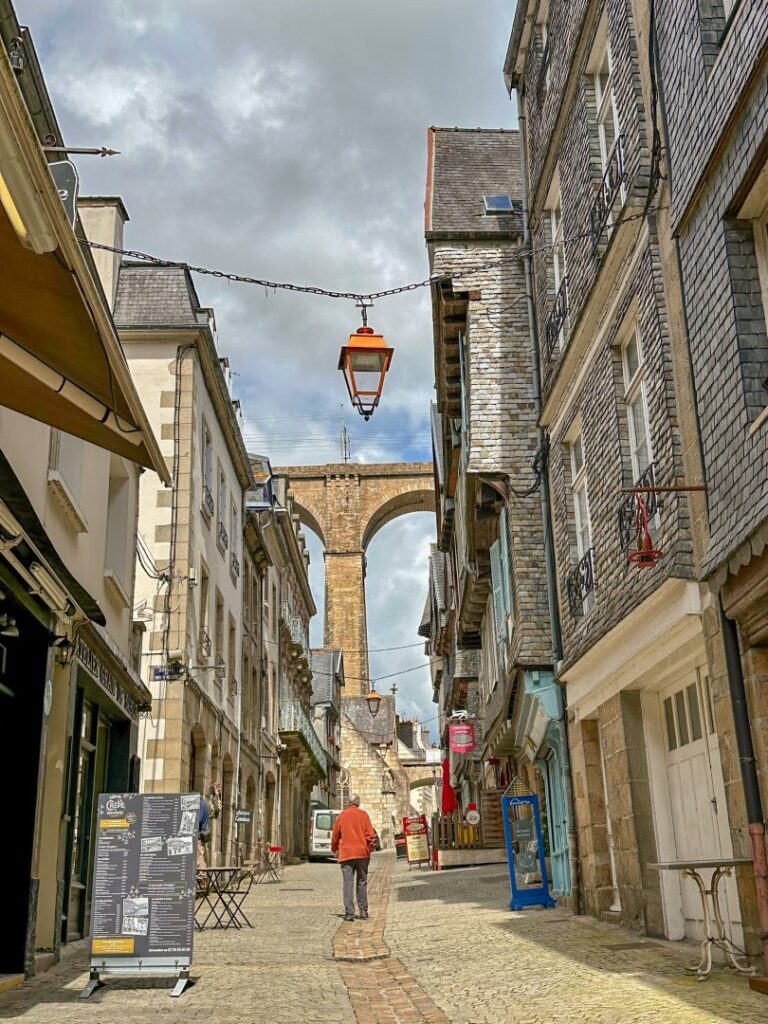

As you can see from the pics, the first couple of days were still brisk and largely overcast but the flip side was it gave us an excuse to light the fire at night 😍
Morlaix was very well located for day trips and so we explored a coastline characterised by green rolling hills and cliffs, white-washed fishing villages and ancient ruins. The wildflowers were prolific too and the weather gradually improved as the days went by.
The huge change in tide we had observed in the more easterly part of Brittany still applies here meaning that passing by the same spot at different times of the day potentially meant a vastly different picture.

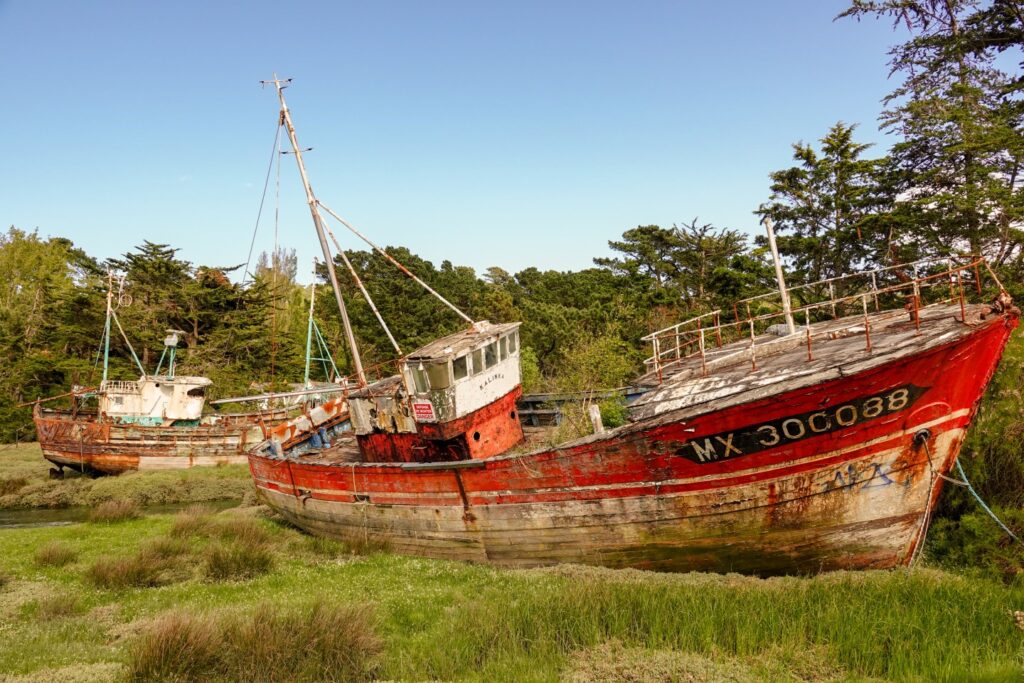

We came across this beautiful spot one day and whilst I was practising new settings on my camera I realised there was a bride and groom on the beach! Looking about I couldn’t see any wedding party but there was clearly a photographer directing the shoot which unfolded in a manner that I hadn’t quite expected …
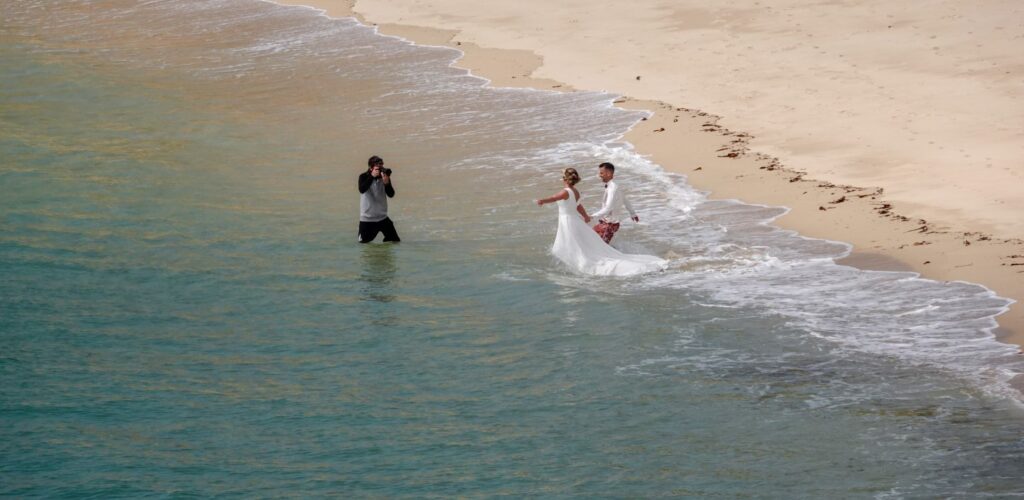

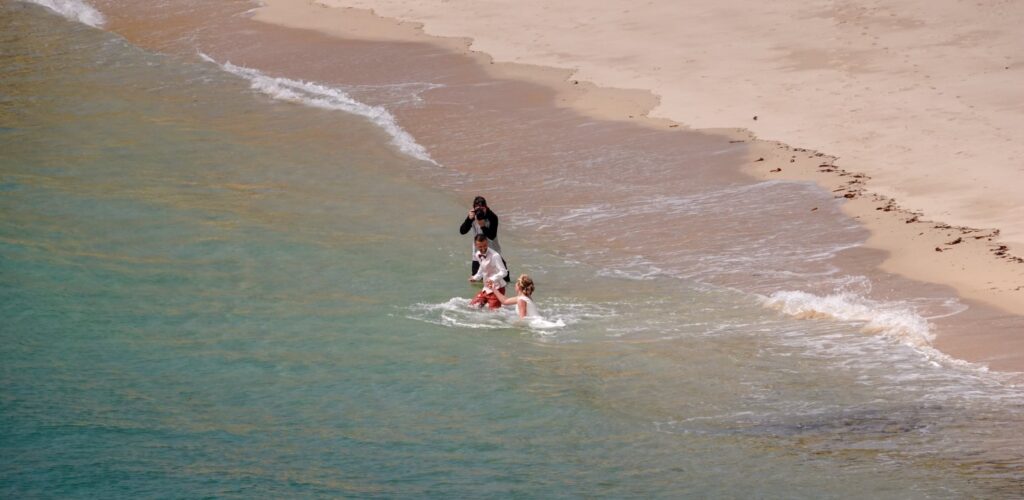
This area is also significant for menhirs. From the Breton word meaning ‘long stone,’ menhirs are isolated or in groups, they may be arranged in a straight line, in alignment or in a circle. Their size can range from a few centimetres to more than twenty metres and their placement was certainly of ritual or astronomic significance in Neolithic times.
I found our first one at Plougasnou, Russell had opted out of the walk so I had to rely on a rock and the Apple watch to capture the moment 😂

Brittany abounds with coastal walks and armed with a pocket book detailing same I was determined to get at least a few under my belt, sometimes accompanied but Russell sometimes he had some reading to catch up on 😉
We spent a day visiting Roscoff, a charming small town on the peninsula with a rich maritime history. The tide was out and we walked the 600 metre jetty out to the the ‘low tide’ berth for the Isle of Batz ferry passing high and dry boats and getting a great view of the village. We also spotted the seaweed harvesters, this area has become one of the biggest seaweed production sites in Brittany.
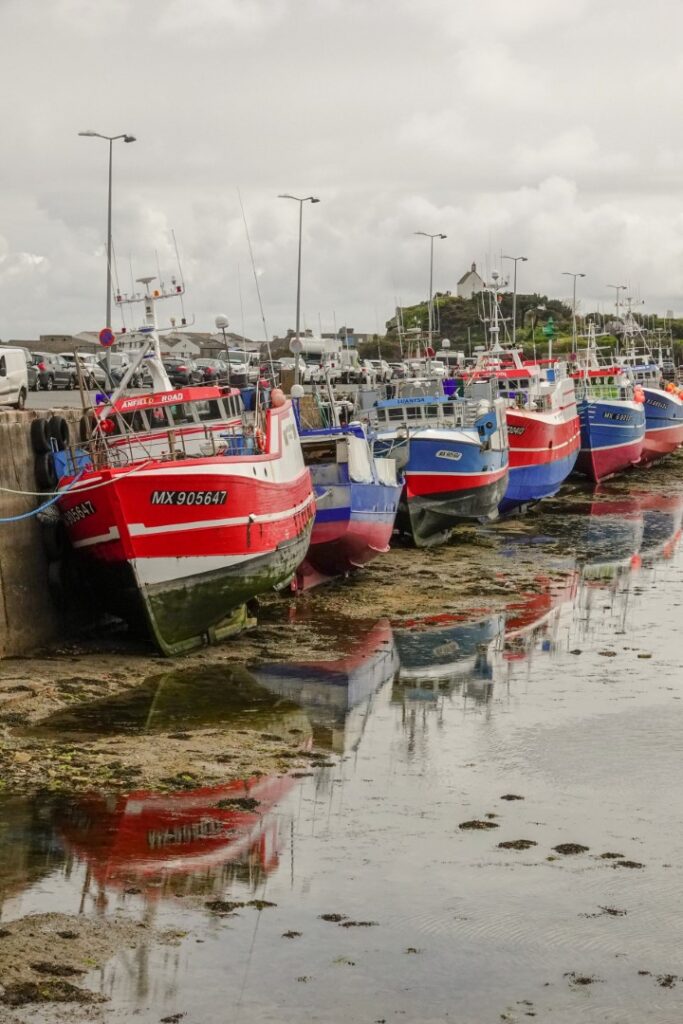
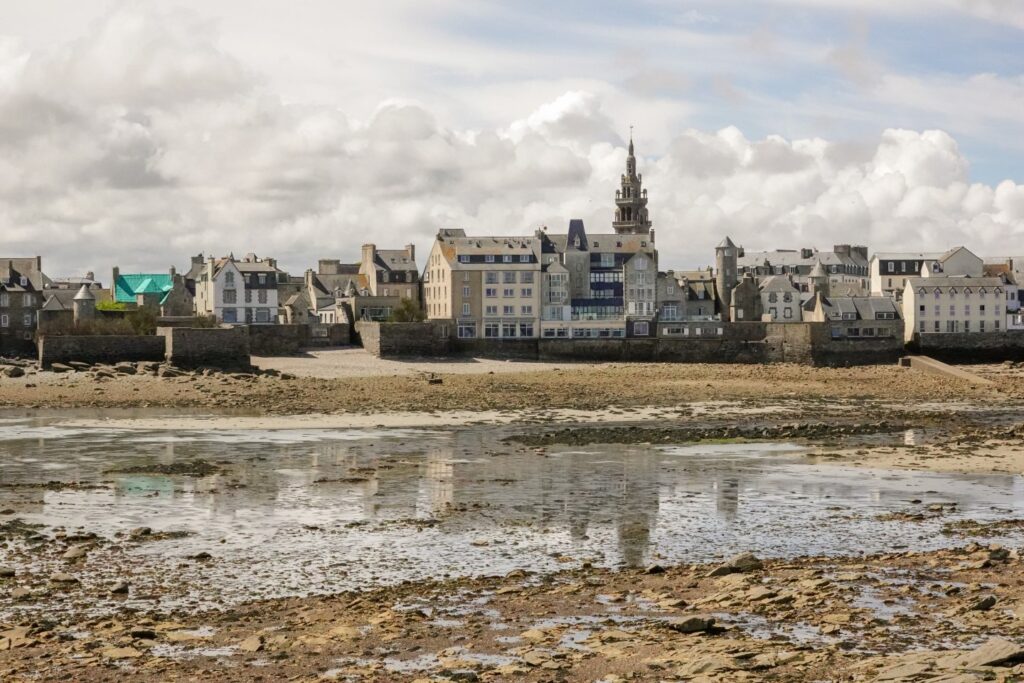

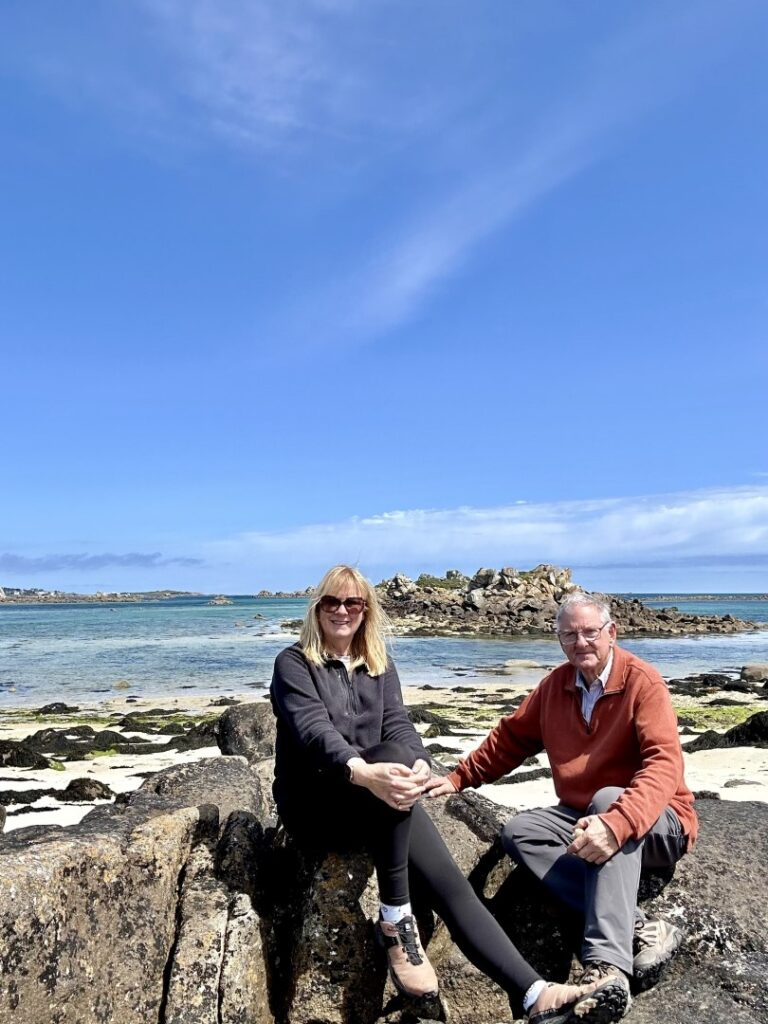
Further along the coast we had our picnic lunch and cup of tea before walking around the very beautiful Pointe de Perharidy. What we didn’t realise was that the trail was actually closed due to storm damage (we had come up from the beach and missed the signage) so it turned out to be a slightly more adventurous walk than we had anticipated – wonderful views though 😉
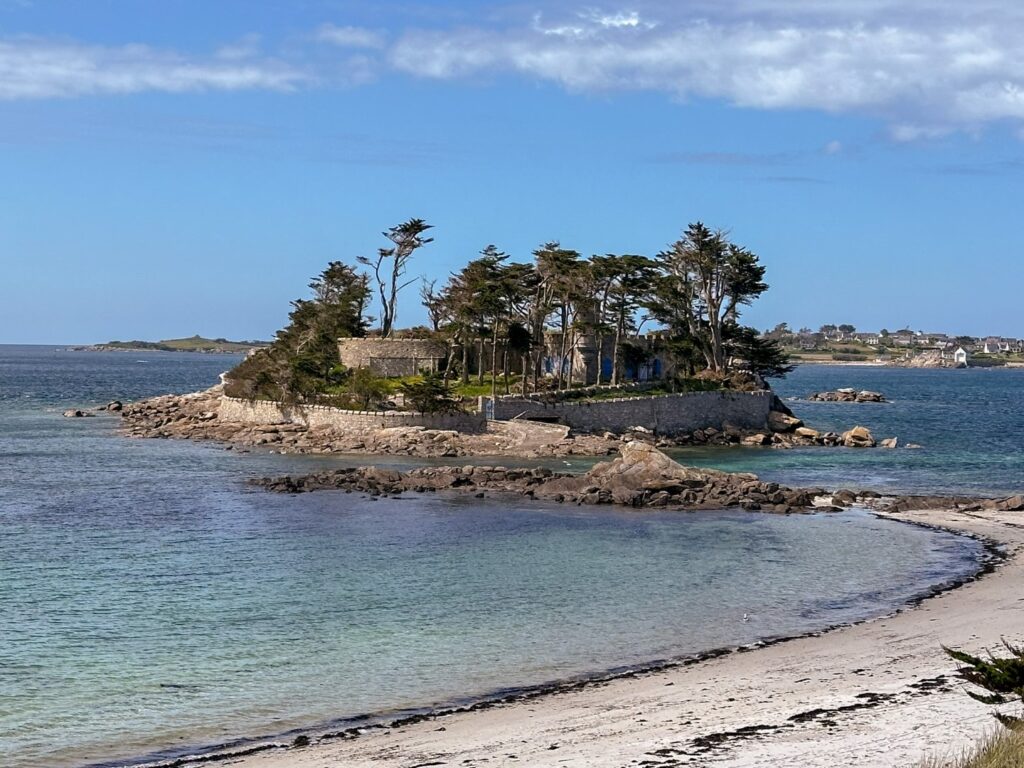
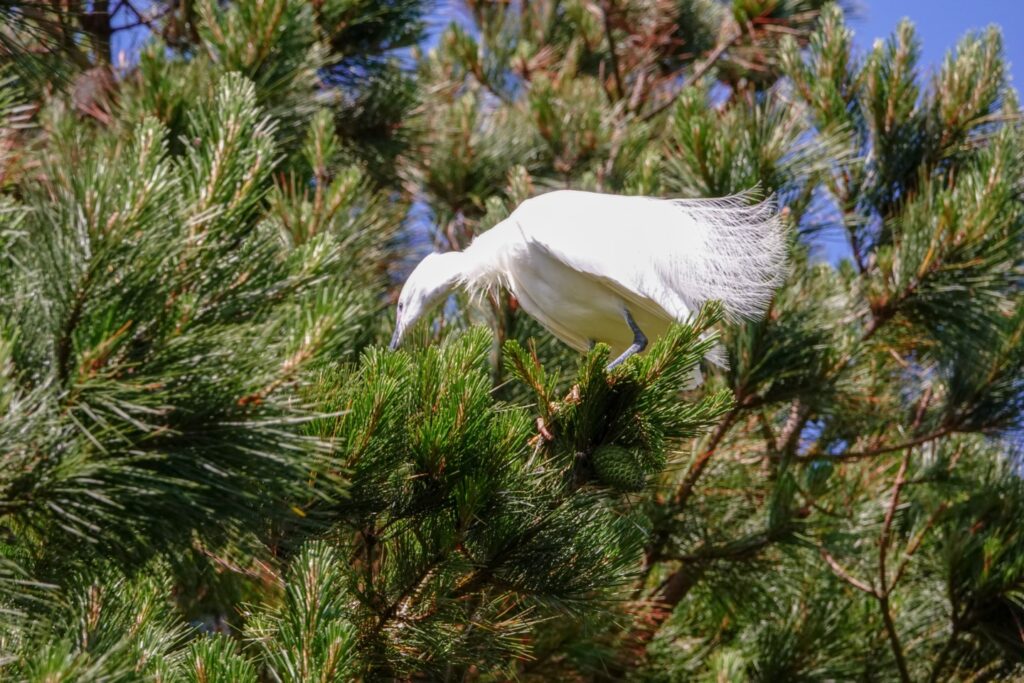
We also began hearing a very curious sound – not unlike an Australian indigenous language being spoken – and eventually spotted the (seemingly unlikely) source, a large white bird with very distinctive plumage.
When we got home and googled what we had seen, the answer was quite interesting. The bird is the Great White Egret – only relatively recently returned to France having been almost hunted to extinction in the 19th century for the sake of fashion! The feather boa was extremely popular in the 18th and 19th centuries with feathers being used as both a fashion accessory and a statement of social status. They were also extensively used by cabaret dancers in their erotic performances and the feathers that the Great White Egret produces ONLY during mating season were highly prized. Happily they are back now and making a real racket at the moment 😂

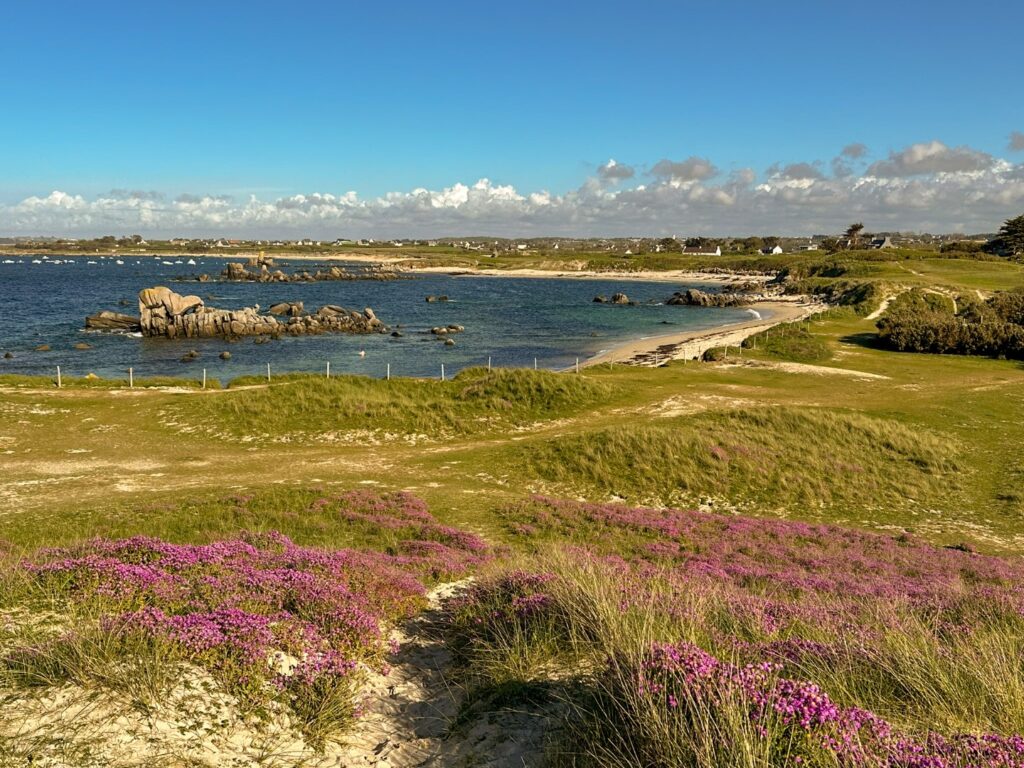
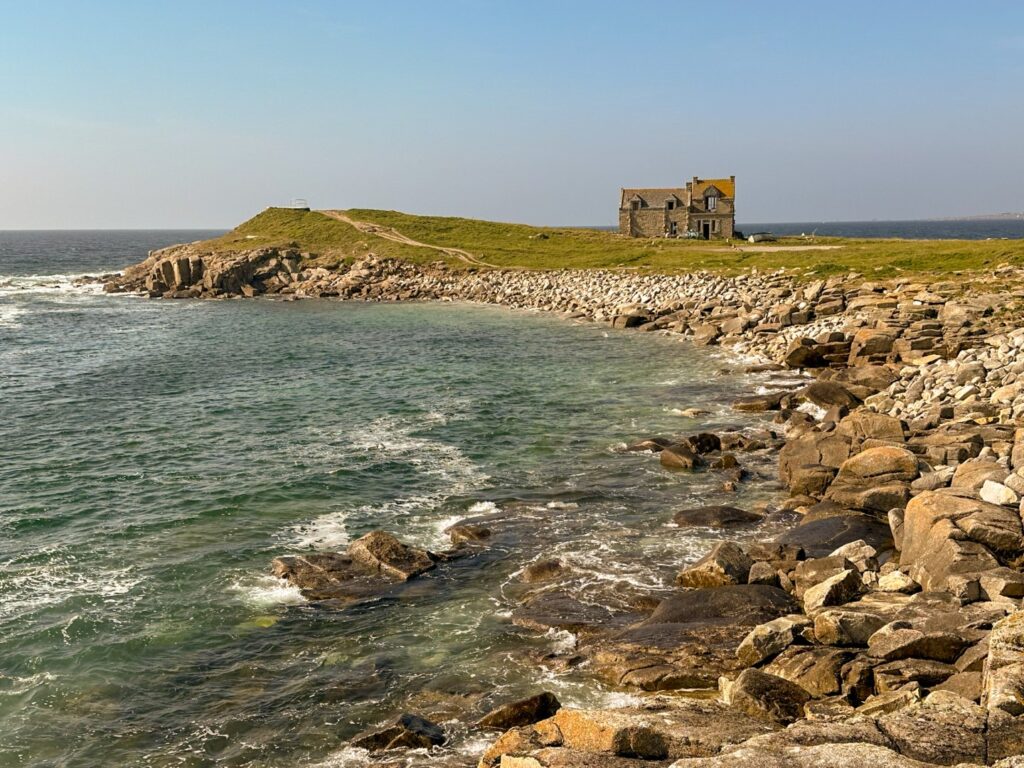
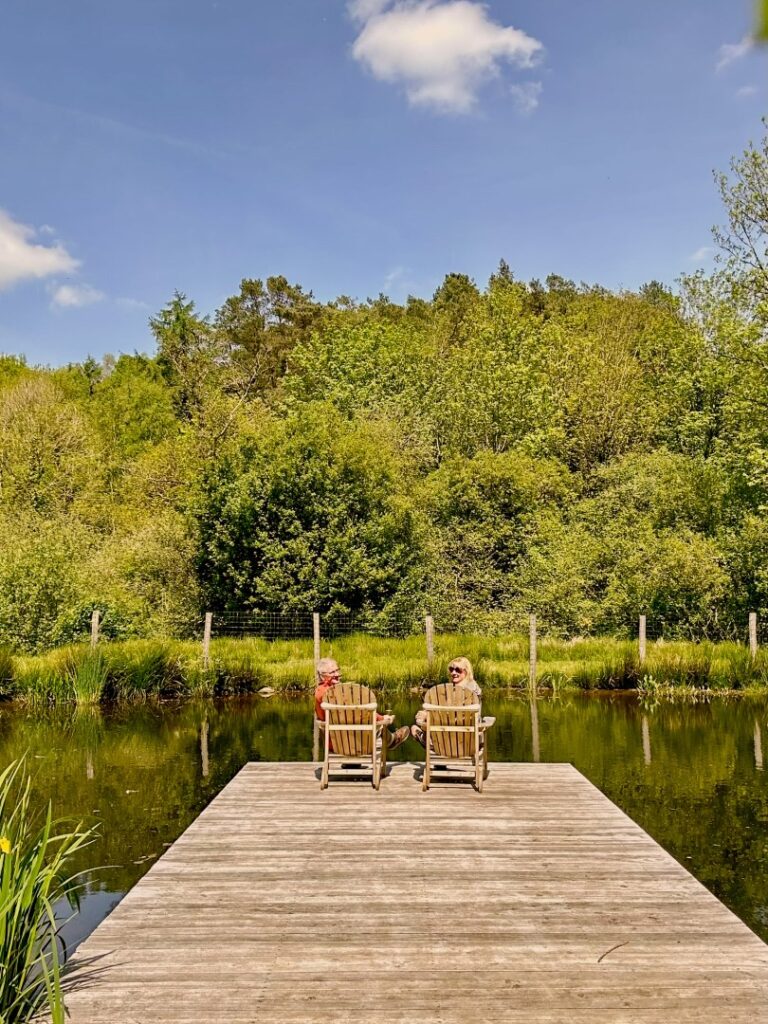
The coast continued to deliver but the peace and tranquility of our cottage was always waiting for us on rest days…
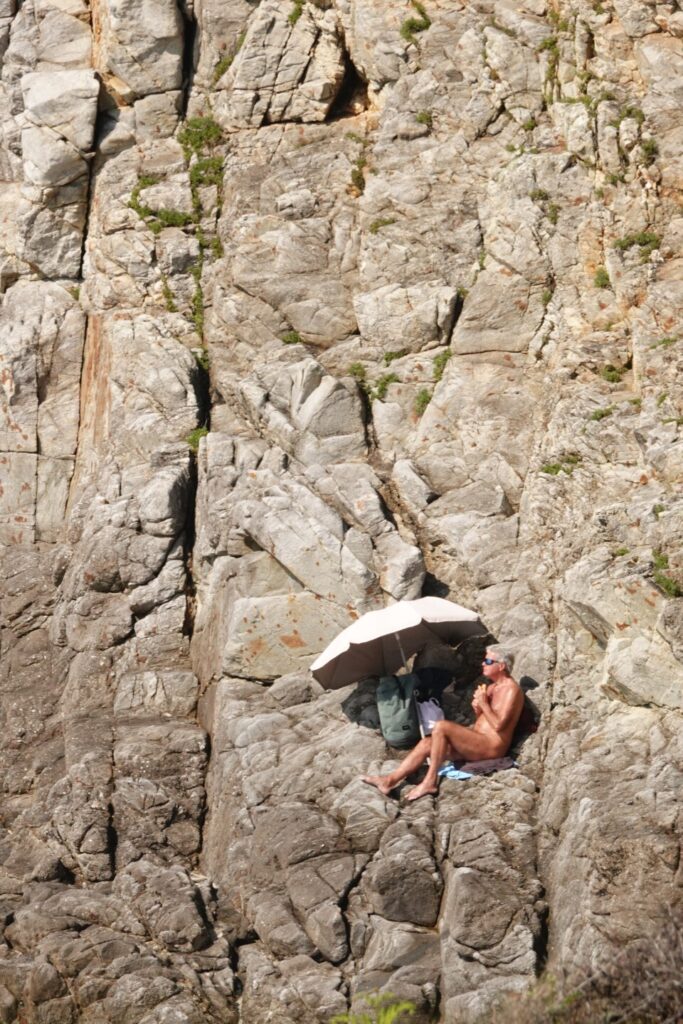
…especially when my zoom lens unexpectedly captured more than I’d bargained for 😂
For the last few days of our stay we were joined by Tannika who had caught the train down after soaking up some Parisian culture for a few days.
We took a trip to the Côte de Granit Rose, aptly named and very popular on what was a public holiday for the French. We saw the iconic ‘house between two rocks‘ (albeit somewhat spoilt with two cars parked in front) and spent a good while wandering the coastline with tide conveniently out.
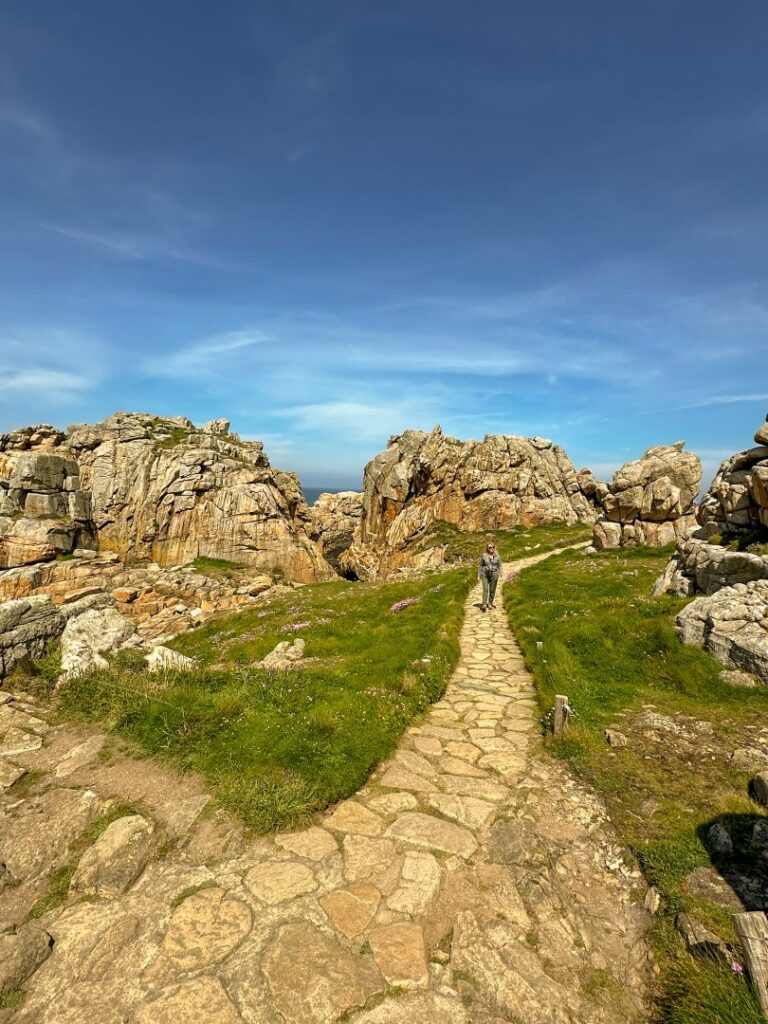
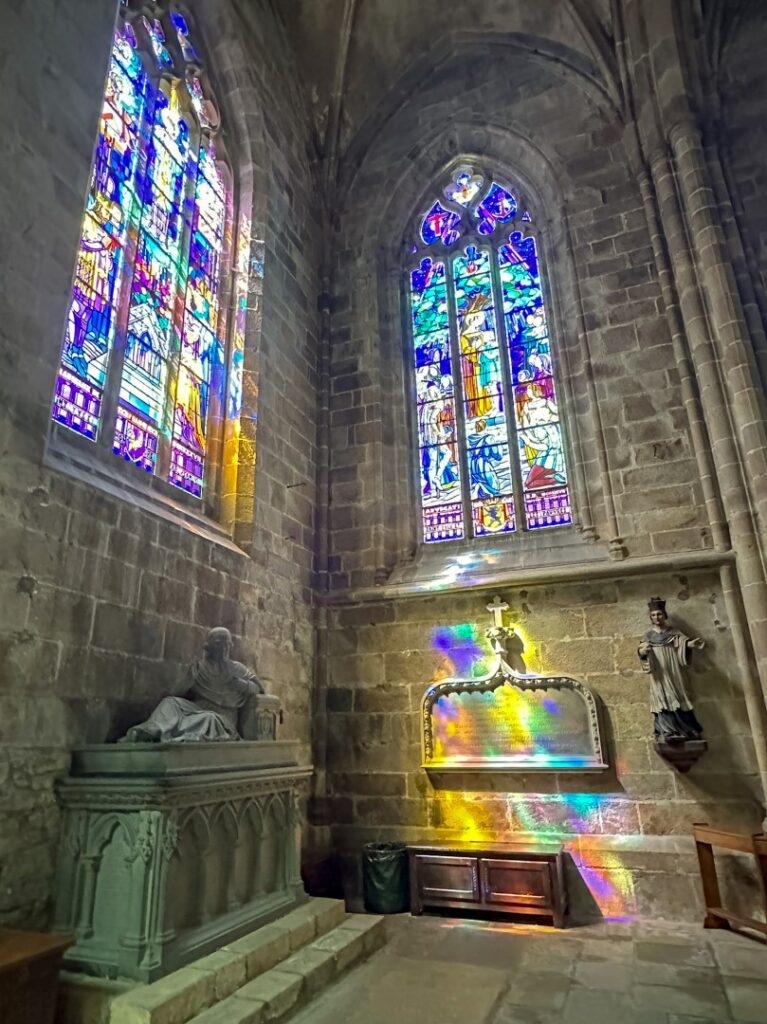
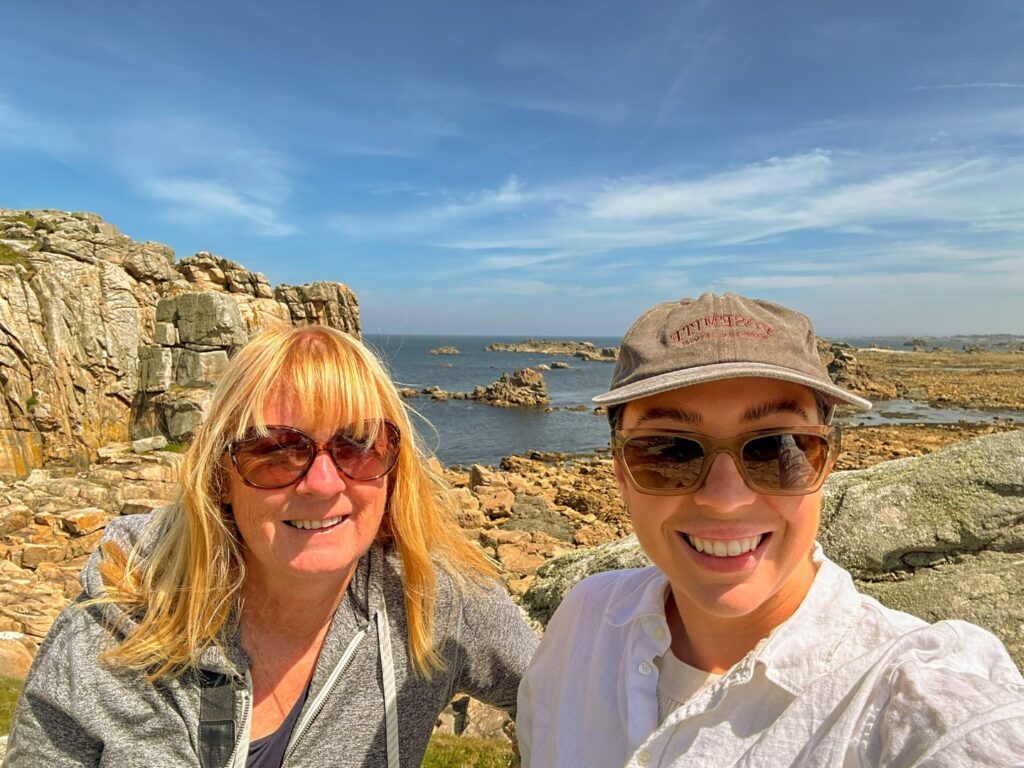
We then found ourselves not far from Île–de–Bréhat and with tickets available for almost the last crossing we decided to take a quick jaunt over to this 3.5 km by 1.5 km piece of paradise.

Whilst we waited we watched the returning ferries which all seemed to be packed, it semed like every man and his dog had made the trip on this perfect public holiday.
There are no cars on the island, only small tractors and bikes and around every corner is a quaint lane with grey stone houses and beautiful gardens.


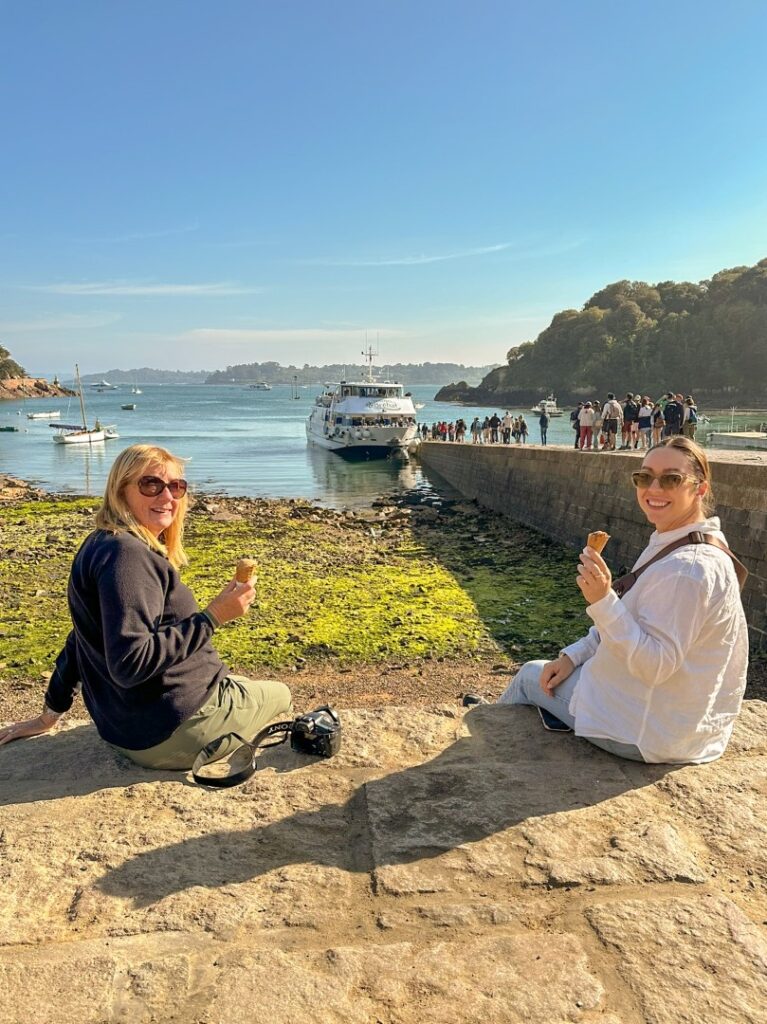
We only had a short time before the last trip back but we managed to see quite a bit and then got a great appreciation of the tidal change when we realised the whole jetty and walkway we had docked at coming over was now well underwater and we were to board from another wharf altogether.
The next day we devoted to searching out some of the Phares de Bretagne. The Brittany coast has the largest concentration of lighthouses in the world, with a record number in Finistère.
We only managed to get to three but each was spectacular in its own way…
First up was the Phare de Kermorvan. The Kermorvan Lighthouse is considered to be the westernmost lighthouse in France and sits on the peninsula of the same name just northwest of the port of Le Conquet. It is preceded by a 19th century port and Tannika and I opted to climb the square lighthouse whilst Russell took in the view from below.
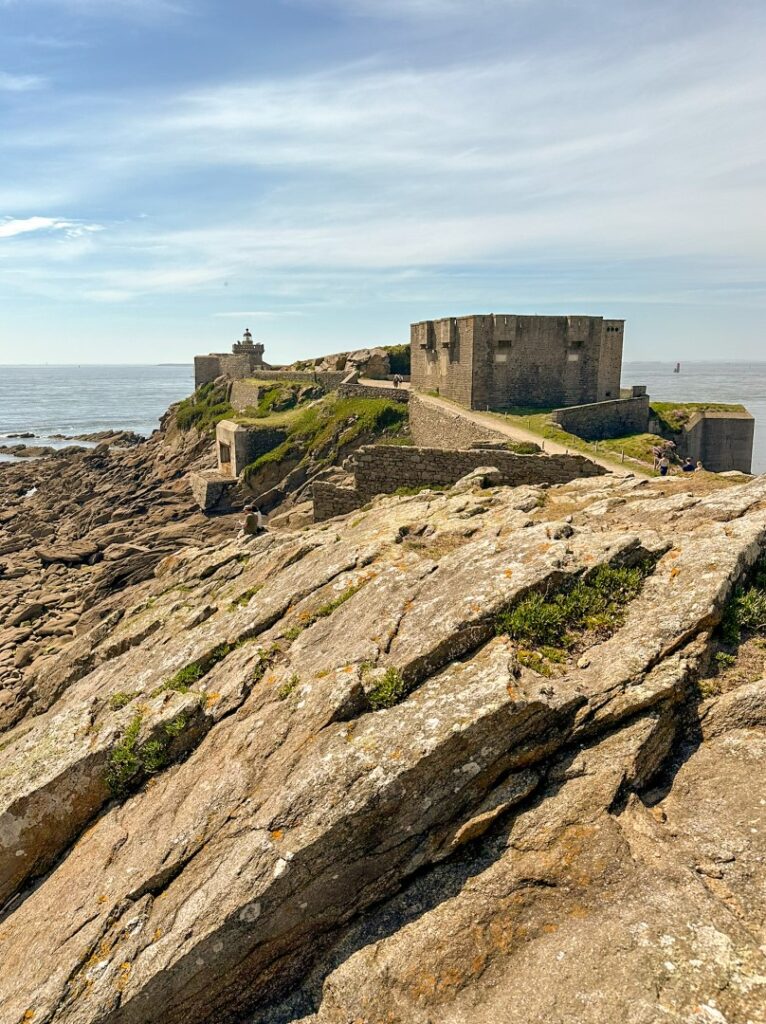

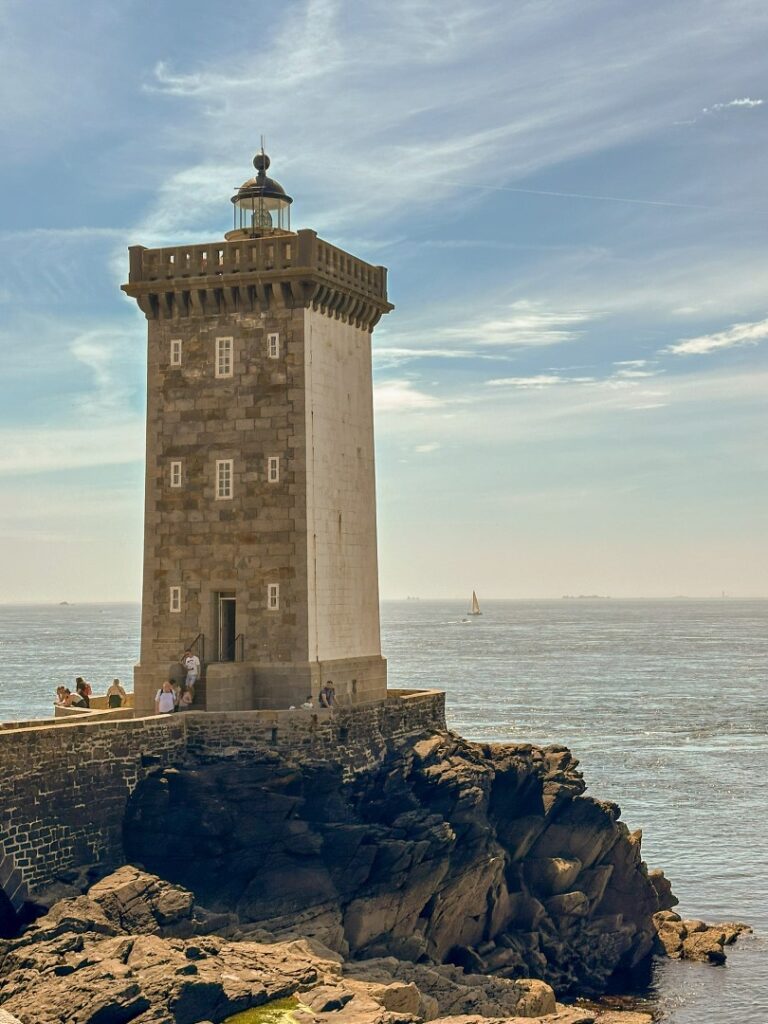
A little further along we came to the magnificent Saint-Mathieu Lighthouse which emerges from the ruins of a former abbey. Both the ruins and the lighthouse were interesting and provided a great spot for afternoon tea before continuing our walk down to a poignant memorial to WWI sailors.



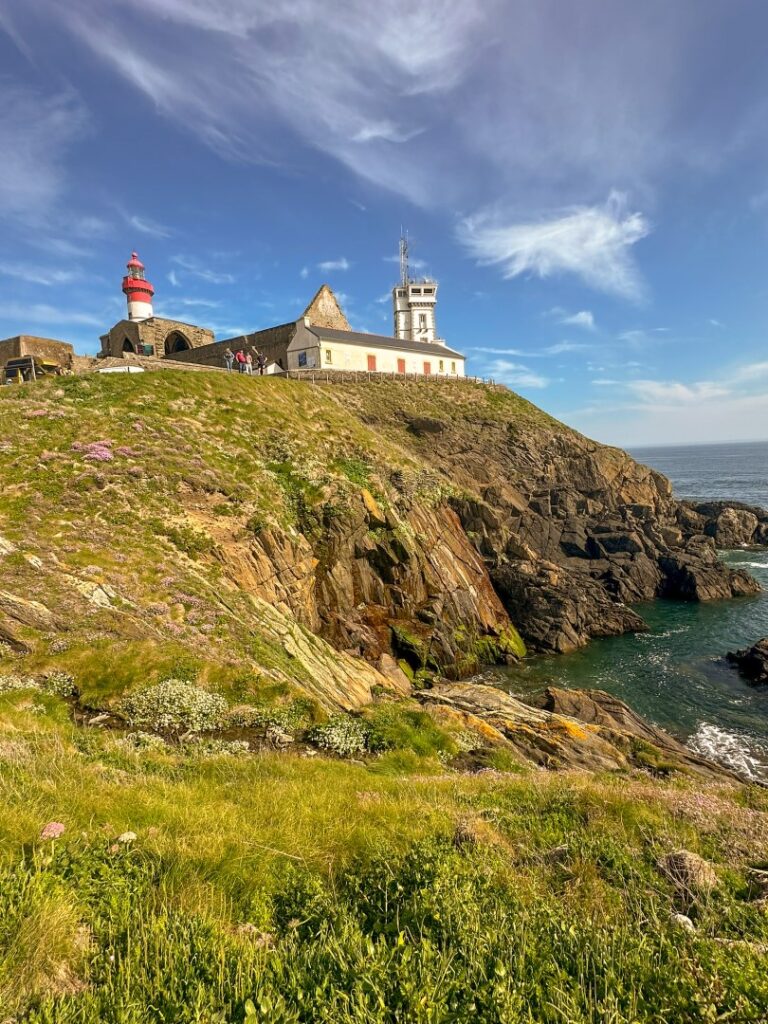

Late in the day (daylight until nearly ten pm) we arrived at the guardian of Brest bay, Le Petit Minou. At the end of a zig zagging jetty this 26 metre tall structure has stood since 1848 and was possibly my favourite.

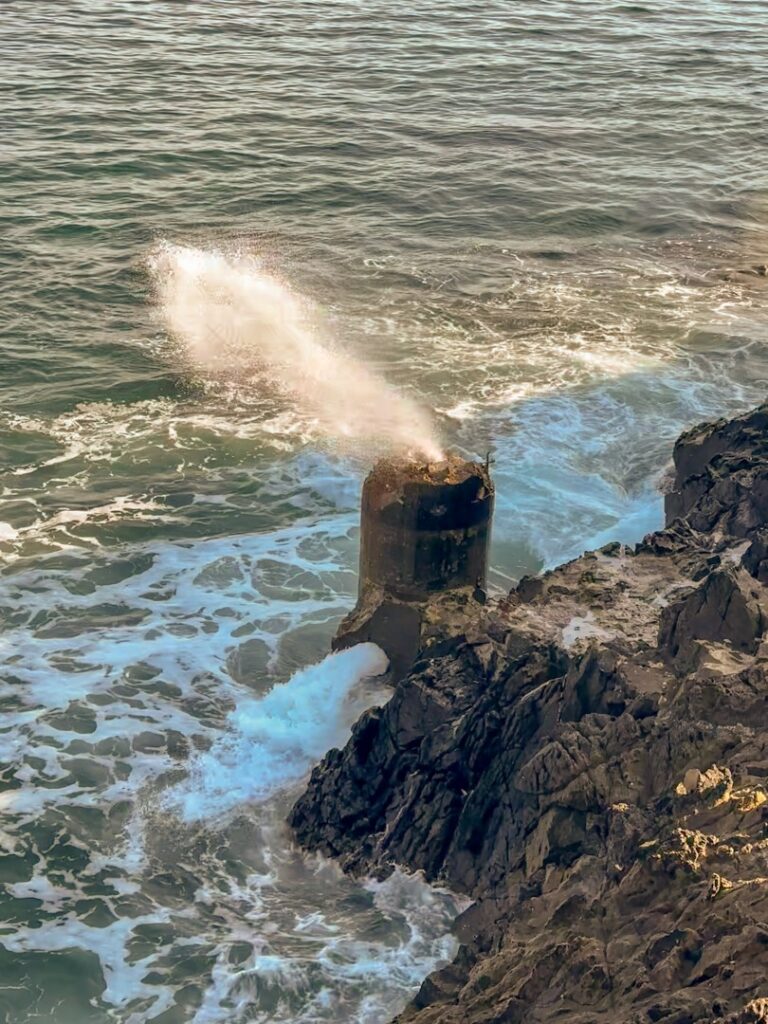

We managed to find a restaurant in Morlaix for a late dinner and then our Brittany sojourn was completed with the spectacle of the light show on the viaduct as we walked back to the car.
I thought twelve days would be enough – it wasn’t – but there is always next time 😍

